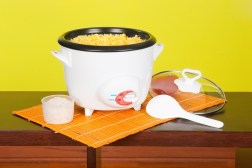Stretching Beyond Limits: Innovative Strategies for Enhancing Flexibility
Flexibility is an important aspect of overall fitness and well-being. It not only helps prevent injuries but also improves posture, enhances athletic performance, and increases range of motion. Whether you’re an athlete looking to improve your performance or someone wanting to maintain a healthy lifestyle, here are some innovative strategies to help you increase flexibility.
Incorporate Dynamic Stretching into Your Routine
Dynamic stretching involves moving parts of your body through a full range of motion. Unlike static stretching, which involves holding a stretch for a prolonged period, dynamic stretching helps warm up the muscles and prepares them for physical activity.

Consider adding dynamic stretches like leg swings, arm circles, or walking lunges to your warm-up routine before engaging in any physical activity. These movements not only increase blood flow to the muscles but also activate the nervous system, making them more receptive to stretching.
Practice Yoga or Pilates
Yoga and Pilates are popular physical disciplines that focus on flexibility, strength, and balance. Both practices incorporate various poses and movements that target different muscle groups while promoting relaxation and mindfulness.
Yoga poses such as downward dog, warrior pose, or child’s pose can help lengthen muscles and increase flexibility over time. On the other hand, Pilates exercises like the spine twist or single-leg stretch engage core muscles while improving overall body flexibility.
Use Foam Rollers for Self-Myofascial Release
Foam rolling is a self-massage technique that uses a cylindrical foam roller to release tension in muscles and fascia (connective tissue). By applying pressure on specific areas of your body using the foam roller, you can break up adhesions and knots in the muscle fibers.
Incorporating foam rolling into your routine can help improve flexibility by increasing blood circulation and relaxing tight muscles. Focus on areas prone to tightness, such as the calves, quads, hamstrings, and upper back. Spend a few minutes rolling back and forth on each muscle group to release tension and improve flexibility.
Try Active Isolated Stretching
Active isolated stretching (AIS) is a technique that involves holding a stretch for just a few seconds and repeating it multiple times. Unlike static stretching, AIS emphasizes active muscle engagement during the stretch.
To perform AIS, choose a specific muscle group you want to target, such as your hamstrings or quadriceps. Gently stretch the muscle to its end range of motion for about two seconds before releasing. Repeat this process several times to gradually increase flexibility without causing strain or discomfort.
In conclusion, increasing flexibility requires consistent effort and dedication. By incorporating dynamic stretching into your routine, practicing yoga or Pilates, using foam rollers for self-myofascial release, and trying active isolated stretching techniques, you can enhance your overall flexibility and enjoy the benefits it brings to your physical performance and well-being. Remember to start gradually and listen to your body’s limits to avoid injury while working towards greater flexibility.
This text was generated using a large language model, and select text has been reviewed and moderated for purposes such as readability.





